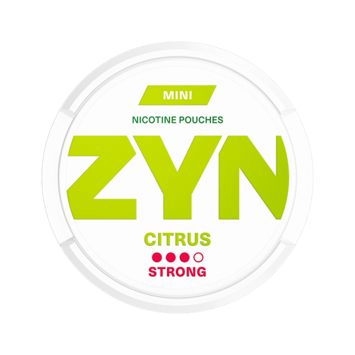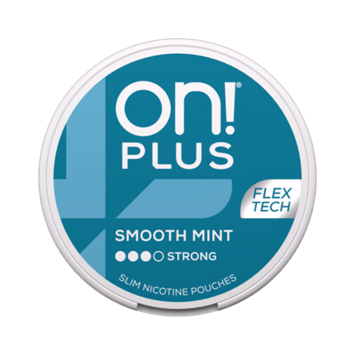What are the risks of nicotine pouches?
Philip Plainstein

Nicotine pouches have become an increasingly popular tobacco-free product in the UK, especially among young people. These small, discreet pouches are placed between the lip and gum to deliver nicotine without the need for smoking. While they are marketed as a lower-risk alternative to cigarettes, the emerging evidence about their safety is still limited.
Brands like Zyn, On!, and Velo have gained significant attention, but concerns about their impact on health are growing. Nicotine pouches can lead to addiction, as they contain high levels of nicotine. Additionally, they may cause oral health issues, such as gum irritation and recession. Recent studies have shown that 73% of current users also smoke cigarettes, highlighting the potential for dual use and increased harm.
Although nicotine pouches contain fewer harmful chemicals than traditional tobacco products, they are not without risks. Some pouches have been found to contain cancer-causing chemicals, and their long-term effects on oral health remain unclear. As their popularity grows, it is essential to understand both the immediate and long-term risks associated with their use.
For more information on how nicotine pouches can affect your gums, visit our detailed guide: What Do Nicotine Pouches Do to Your Gums.
Understanding Nicotine Pouches
Nicotine pouches have rapidly gained popularity as a modern, tobacco-free alternative, especially among young people in the UK. They emerged around 2019 and are marketed as a tool for reducing harm from tobacco use.
Product Overview and Background
These pouches are designed to be placed between the lip and gum, similar to traditional snus but without the tobacco. They first appeared in Europe and the USA, quickly gaining traction as a discreet option for nicotine consumption. The product is part of a broader trend towards alternative nicotine delivery methods, positioned as a less harmful choice compared to smoking.
Ingredients, Flavours and Usage Guidelines
Nicotine pouches primarily contain water, microcrystalline cellulose, nicotine, food-grade additives, and flavourings. They come in a variety of flavours, from mint to fruity options, appealing to a broad audience. To use, simply place a pouch between your lip and gum, where it can stay for up to an hour. The packaging is sleek, often resembling mint containers, as seen with brands like Zyn, On!, and Velo.
Scientific research highlights that these pouches contain lower levels of toxic compounds compared to Swedish snus and tobacco smoking. They are seen as a potential tool for tobacco harm reduction, offering a way to consume nicotine without the combustion-related risks of smoking. However, their long-term health effects remain under study.
Exploring Nicotine Pouches Risks
While nicotine pouches are marketed as a safer alternative to smoking, they come with their own set of risks. Understanding these risks is crucial for anyone considering their use.
Short-Term and Long-Term Risk Considerations
In the short term, users may experience gum irritation and mouth soreness. These immediate effects can be uncomfortable and may deter some from continued use.
Long-term implications are more concerning. Prolonged use can lead to oral health issues such as gingival recession, which can have lasting effects on your gums and overall mouth health.
| Product | Toxicant Levels | Health Impact |
|---|---|---|
| Nicotine Pouches | Lower than cigarettes | Reduced harm but still risky |
| Cigarettes | High | Severe health risks |
| Smokeless Tobacco | Varies | Oral health issues |
Research indicates that 73% of nicotine pouch users also smoke cigarettes, increasing their health risks. While these products contain fewer harmful chemicals than traditional tobacco, the lack of long-term studies means their full impact isn’t yet known. This uncertainty underscores the need for caution and further research.
Health Impacts of Using Nicotine Pouches
While nicotine pouches are often seen as a modern alternative to traditional tobacco products, their health impacts require careful consideration. These products deliver nicotine without combustion, which reduces exposure to certain harmful chemicals found in smoked tobacco. However, they are not without their own set of health concerns.
General Health Concerns
The primary health concerns associated with nicotine pouches stem from their nicotine content. Nicotine, while not a carcinogen, can have cardiovascular effects and may lead to dependence. Compared to smoked tobacco, nicotine pouches contain lower levels of toxicants, but they still pose risks. Research indicates that users may experience increased heart rates and blood pressure due to nicotine absorption.
According to a study published in the Journal of Public Health, “Nicotine itself is not a carcinogen but can have significant cardiovascular and oral health effects.”
This underscores the need for cautious use, especially for those with pre-existing heart conditions.
Oral Health Effects and Localised Issues
Oral health issues are among the most common concerns for nicotine pouch users. Gum irritation, mouth soreness, and potential gingival recession are frequently reported. These effects are similar to those experienced with other oral nicotine products like gum and lozenges, though research suggests that pouches may cause more pronounced gum irritation due to prolonged contact.
A systematic review in the British Dental Journal highlighted that continuous exposure to nicotine from pouches can lead to mouth sores and gum inflammation. Additionally, the reduction in saliva production caused by nicotine can increase the risk of tooth decay and other dental issues.
| Product | Health Impact |
|---|---|
| Nicotine Pouches | Gum irritation, mouth soreness, potential gingival recession |
| Cigarettes | Severe cardiovascular and respiratory diseases, cancer risks |
| Smokeless Tobacco | Oral cancer, gum disease, tooth loss |
While no definitive evidence links nicotine pouches to serious long-term diseases like cancer, ongoing monitoring is essential. Dental studies suggest that the localized effects on oral health can be significant, particularly with medium to long-term use.
For more detailed information on how nicotine pouches can affect your gums, visit our guide: What You Need to Know About Nicotine.
Nicotine Addiction and Dependency Concerns
Understanding the potential for addiction is crucial when considering the use of nicotine pouches. These products deliver nicotine, a substance known for its ability to cause dependence. The way nicotine interacts with your brain plays a significant role in this process.
How Nicotine Affects Your Brain
Nicotine binds to cholinergic receptors in the brain, triggering the release of dopamine. This neurotransmitter is associated with feelings of pleasure, which can encourage repeated use and lead to addiction. Over time, your brain may become reliant on nicotine to maintain these positive sensations, making it harder to quit.
Withdrawal Symptoms and Side Effects
Stopping the use of nicotine pouches can lead to withdrawal symptoms. These may include mood changes, irritability, and cravings. Studies suggest that nicotine pouches may have a similar dependency potential to traditional nicotine replacement therapies, though more research is needed. While nicotine itself isn’t a direct carcinogen, it can promote tumour growth in certain conditions.
A study in the Journal of Public Health noted that nicotine’s impact on the brain’s reward system significantly contributes to addiction.
Understanding these dependency concerns is essential for anyone considering nicotine pouches as a cessation tool. The broader implications for your overall health and well-being during withdrawal also highlight the need for caution. For more information on how nicotine affects your health, visit this resource.
Comparisons with Traditional Tobacco Products
Nicotine pouches are often debated as a potential alternative to traditional tobacco products, but how do they truly compare? This section explores their differences and similarities, focusing on chemical profiles and health impacts.
Lower-Risk Alternative or New Health Problem?
Nicotine pouches contain fewer toxicants compared to cigarettes and smokeless tobacco. Studies show they expose users to lower levels of harmful chemicals, potentially reducing health risks. However, their long-term effects are still under investigation.
Chemical Profiles and Toxicant Exposure
The chemical composition of nicotine pouches differs significantly from traditional products. They contain fewer harmful substances, making them a safer choice for some users. However, the nicotine content can still lead to dependence and other health issues.
| Product | Toxicant Levels | Health Impact |
|---|---|---|
| Nicotine Pouches | Lower than cigarettes | Reduced harm but still risky |
| Cigarettes | High | Severe health risks |
| Smokeless Tobacco | Varies | Oral health issues |
Research indicates that 73% of nicotine pouch users also smoke cigarettes, increasing their health risks. While these products contain fewer harmful chemicals than traditional tobacco, the lack of long-term studies means their full impact isn’t yet known.
Regulatory Aspects and Guidelines in the UK
Nicotine pouches in the UK are currently regulated under the General Product Safety Regulations (GPSR) rather than specific tobacco laws. This means they are treated as consumer products, not tobacco items, which has sparked debates about their safety and oversight.
Unlike e-cigarettes, nicotine pouches do not fall under the Tobacco Products Directive. This lack of specific guidelines raises concerns about consumer protection. For instance, there are no limits on nicotine strength or flavourings, which could make them more appealing to younger users.
Looking ahead, regulators are considering stricter controls. Action on Smoking and Health (ASH) and other groups advocate for measures like nicotine limits and marketing restrictions. They also highlight issues like attractive packaging and flavours, which are worrying due to the product’s growing popularity among young people.
Recent seizures of illegal nicotine pouches, such as those in Oxfordshire and Dorset, highlight enforcement challenges. These incidents often involve products exceeding legal nicotine levels or violating safety standards.
For more details on the regulatory landscape of nicotine pouches, visit ASH Scotland’s briefing.
Nicotine Pouches Risks in Smoking Cessation and Alternative Use
Nicotine pouches have emerged as a potential tool for smoking cessation, but their effectiveness compared to traditional methods remains uncertain. While some users find them helpful, others raise concerns about their long-term impact.
Effectiveness Compared to Approved NRTs
Traditional nicotine replacement therapies (NRTs), such as patches and gum, have been extensively studied and proven to aid smoking cessation. In contrast, nicotine pouches lack robust evidence to support their efficacy as a quit-smoking tool. Studies indicate that while they may help reduce cravings, they are not as effective as FDA-approved NRTs.
- Nicotine pouches deliver nicotine quickly, which some users find beneficial for managing cravings.
- However, they have not been approved by the FDA for smoking cessation, unlike traditional NRTs.
User Experiences and Perceived Benefits
Many users appreciate the convenience and discreet nature of nicotine pouches. They come in various flavours and are easy to use, making them an attractive alternative for some. Surveys show that users often report satisfaction due to their portability and pleasant taste options.
- Users highlight the ease of use and the ability to consume nicotine without the need for vaping or chewing tobacco.
- The compact packaging is seen as a significant advantage, allowing discreet use in public settings.
Despite these perceived benefits, healthcare professionals caution against relying solely on nicotine pouches for cessation. They advise combining such products with behavioural support for better success rates.
Final Reflections on Your Nicotine Pouch Journey
As you reflect on your journey with nicotine pouches, it’s important to weigh the benefits against the potential drawbacks. These products have emerged as a modern alternative to traditional tobacco, offering a discreet and potentially lower-risk option for nicotine consumption. However, their long-term health impacts and dependency concerns remain under scrutiny.
While nicotine pouches contain fewer harmful chemicals than cigarettes, they are not without risks. Studies highlight their link to increased heart rate, blood pressure, and potential cardiovascular issues. Additionally, their role in smoking cessation is uncertain, as they may help some reduce cravings but lack robust evidence compared to approved therapies.
Regulatory changes in the UK and ongoing research will continue to shape our understanding of these products. As you consider their use, consult health professionals and stay informed about the latest findings. Your decision should be personalised, reflecting your health goals and lifestyle.
Ultimately, your approach to nicotine pouches should be well-informed and cautious, ensuring you prioritise your long-term health and well-being.









